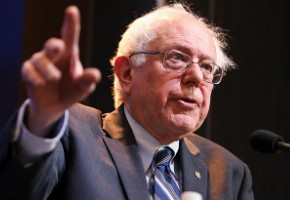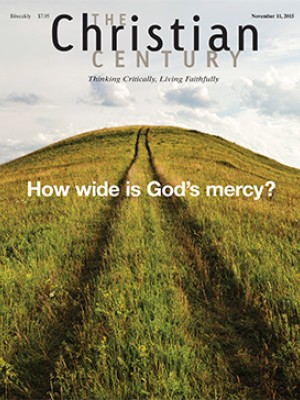Liberal messiah: If Sanders became president, what would change?

The campaign for the Democratic nomination for president began in earnest on July 1, when Vermont senator Bernie Sanders addressed a crowd of 10,000 in Madison, Wisconsin. Sanders had already drawn impressive crowds in Denver, Minneapolis, and elsewhere. But the Madison rally was the biggest event yet for any candidate in the 2016 field. The sheer size of the crowd made journalists covering the previously dreary Democratic primary contest sit up and take notice.
“Politics in a democratic society should not be complicated,” the candidate told the roaring crowd. “Politics is not a soap opera,” but rather “people coming together to make life better for our people.” A populist both in rhetoric and in his unassuming, somewhat shambolic self-presentation, Sanders showed why he has managed to pull ahead of Hillary Clinton in polls of early-voting Iowa and New Hampshire, and why he has filled arenas in urban centers and progressive strongholds around the country.
Read our latest issue or browse back issues.
Sanders is running uphill against the neglect of major media and the hostility of the party’s officeholding and check-writing elite. But he has tapped into the latent enthusiasm of the progressive part—so far, the overwhelmingly white, college-educated progressive part—of the party’s base. His campaign’s unvarnished emphasis on economic inequality is no doubt part of his appeal. So are his ardently progressive positions on jobs, the minimum wage, and campaign finance.
But the crowd in Madison saved its heartiest approval for the moments when Sanders reached beyond a liberal wish list to herald a more dramatic transformation in American politics. “All of these guys,” Sanders said of Wall Street and corporate America, “have so much power that no president can defeat them unless there is an organized grassroots movement making them an offer they can’t refuse.” The Republican Party and too many Democrats, Sanders went on, “are owned by big money interests.” The answer is “a political revolution in America.”
It is an appeal with a familiar ring. Wisconsin, after all, launched George McGovern—once an obscure senator, then a grassroots hero—to the Democratic nomination in 1972. The state gave Barack Obama one of his biggest margins in the 2008 primaries. Sanders follows their path of presenting a presidential campaign as a mass movement that can circumvent congressional wrangling and overawe entrenched interests to rewrite the rules of politics.
Many liberal voters think these rules need rewriting, and understandably so. As the Democrats enter the 2016 election season, they find themselves in a vexing, even paradoxical position.
The party’s candidates have won the popular vote in five of the last six presidential elections. Obama won an outright majority of the popular vote in both 2008 and 2012—only the second president to do so twice since Eisenhower, an international hero who could have won the presidency on either party’s ticket. The Democratic nominee will start with built-in advantages from demographics and the electoral map. In 2012 Obama won the national popular vote by 4 percentage points. Some of the states he won were closer than that—but he would have been reelected even if he’d lost those states.
Yet Republicans have controlled the House of Representatives for all but four of the last 22 years. Their current margin is so large that their majority will likely hold until after 2020. The Senate is closer, but the road to a Democratic majority in 2016 is hard and will be harder in 2018. At the state level the situation is more dire still. In 2010 and 2014, states that vote reliably for Democratic presidential candidates elected very conservative Republican governors. Many of these governors enjoy GOP legislative majorities in one or both houses.
The result of all this has been a frustrating deadlock. When federal policy does get made, it often happens through high-stakes negotiations between the Democratic president and the Republican Speaker of the House. In some cases, policy change comes through the limited scope of executive orders—or through the moral intuitions of Supreme Court Justice Anthony Kennedy, who cast decisive votes both to dramatically weaken the Voting Rights Act (a law passed by huge majorities in Congress) and to overturn state bans on same-sex marriage (bans approved by popular vote). Meanwhile, major revisions of labor law and education policy are happening at the state level, beyond the reach of the presidency.
While the situation makes it tempting to throw progressive activist energy behind a messianic bid for the presidency, it also makes such a strategy dubious. Sanders is undoubtedly a valuable senator for progressive economic issues. His campaign has forced Clinton to work for voters she might otherwise have taken for granted and to adopt positions she may otherwise have shied away from. He may yet prove to be a viable national candidate. But the Sanders campaign rests on a highly doubtful proposition: that a grassroots movement capable of electing a frankly progressive president can also, more or less by itself, force more progressive policy outcomes. Sanders has only suggested this with his talk of a political revolution, but his supporters have taken this hope very much to heart.
Obama offered a similar (if ideologically hazier) hope eight years ago. Then it was a movement that could cut through destructive partisanship and bring people together for the common good. Reality, after the heady days of 2008, proved unaccommodating. Obama has earned some of the frustration progressives feel toward him. His turn toward austerity after the 2010 midterms was unsuccessful both as politics and as policy, and his willingness to negotiate over the debt ceiling invited financial and political disaster. He didn’t take monetary policy seriously enough and as a consequence may have slowed the economic recovery.
But at no point in his presidency was Obama the actor who limited the progressive potential of legislation. Even with Democratic majorities in both houses and a mammoth mailing list of people engaged in grassroots lobbying, bills on health care, economic recovery, and financial reform needed the support of lawmakers much less liberal than he. The proposal to limit carbon emissions, which passed the House in 2009, never came up for a vote in a Senate with a filibuster-proof 60 Democrats. Had Bernie Sanders been president in 2009, piloting that same network of small donors and grassroots activists, those same limitations would have applied. His proposal to expand Medicare into universal health insurance would have had no better chance of becoming law.
So there is something subtly discouraging about the Sanders presidential crusade. It is, if nothing else, an instance of the ongoing progressive fixation on the presidency as the definitive pivot of American politics.
Progressives are hardly alone in this. The cult of the imperial presidency, bolstered by the real and symbolic powers of the office, is widely accepted—even by political journalists who affect a kind of hard-nosed cynicism about the political process. But it holds a special fascination for progressives. Their firmament is studded with presidential heroes. Franklin Roosevelt is foremost, but Kennedy and now, as Vietnam fades in the national memory, Lyndon Johnson are objects of a kind of political reverence. Indeed, the only Democratic president since FDR who does not inspire at least a modicum of nostalgia is Jimmy Carter.
Each of these presidents was criticized, often vigorously, from the left. Each was deeply compromised, whether by racial politics, war, or mere calculation. Yet in retrospect, each is credited with rewriting the rules of American politics, as if by their own ideas, force of personality, and ability to seize the spirit of their times. Even failed candidates, from McGovern to Jesse Jackson, wear some of the sheen of transformative figures.
For conservatives, the pantheon is simpler: Ronald Reagan stands alone. The considerable political and policy successes of Eisenhower, Nixon, and George H. W. Bush are largely neglected. This has given rise to an embarrassing, even comical Reagan necromancy among Republican presidential hopefuls. But conservatives have also done something progressives have not: they have built an impressive coalition for winning in Congress and in the states.
Observers and activists point out that in many states, districts have been drawn to maximize Republican victories, aided by the denser geographical distribution of Democratic voters. And turnout in midterm elections is dramatically lower than in presidential years and is concentrated among older, whiter, and wealthier voters—voters who tend to favor Republicans.
But this is a question dressed up as an answer. Sanders drew a massive crowd in Madison, but that grassroots activism didn’t manage to defeat Wisconsin governor Scott Walker in three chances, or even to dent his legislative majorities. Somehow the progressive energy that coalesces around quixotic presidential campaigns doesn’t translate into minds changed and voters turned out when it’s time to elect down-ticket candidates. And this down-ticket engagement is needed even, perhaps especially, for the kind of milquetoast officeholders who can push the policy center even slightly in a more progressive direction—the kind of Democrats Sanders dismisses as being “owned” by hostile interests.
This is the missing link in the argument of every presidential crusade of this sort: how to turn grassroots energy and zeal into a governing majority. Sanders, no less than Obama or any other Democratic president, will have to take his promise to rewrite the rules of American politics and modulate it into a plan for winning by the rules as they are.
The progressive triumphs of the New Deal and the Great Society, and even those of the Obama years, didn’t come through presidential speeches or unfiltered grassroots energy. They came through the votes of hundreds of forgotten time-servers and ward-heelers. These people were chosen and held accountable by unions, farm organizations, church groups, and county party organizations with an identity extending beyond an individual campaign or issue. If progressives don’t temper their presidential enthusiasms with greater efforts to build such organizations, the swing from the euphoria of the presidential crusade to the discontents of governing will only grow wider and swifter.





